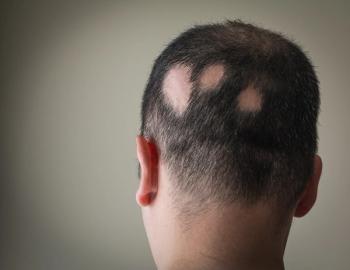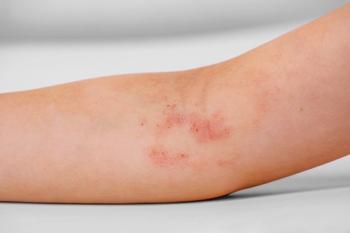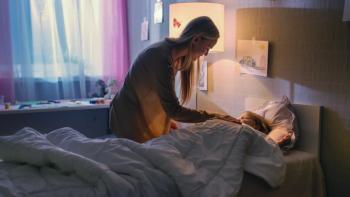
- Consultant for Pediatricians Vol 6 No 10
- Volume 6
- Issue 10
Bell Palsy From Lyme Meningitis
After experiencing frequent headaches, this 10-year-old girl awoke with a "funny smile" involving left-sided facial paresis. She was evaluated in an emergency department and a complete blood cell count, Lyme IgM and IgG screen, and CT scans of the head and sinuses were ordered.
After experiencing frequent headaches, this 10-year-old girl awoke with a "funny smile" involving left-sided facial paresis. She was evaluated in an emergency department and a complete blood cell count, Lyme IgM and IgG screen, and CT scans of the head and sinuses were ordered. The patient was discharged with a diagnosis of isolated Bell palsy.
Two days later, the patient's parents were advised that the Lyme test results were positive (greater than 5 titers) and that the child needed further evaluation.
At the local childrens' hospital, the patient was alert and talkative and did not have a toxic apperance. She denied neck pain, fever, vomiting, or visual disturbance. Vital signs were normal. She could not close her left eye completely or form a smile with the left side of her face (Figure). She had no neck lesions or neck rigidity. Heart rate and rhythm were regular, without murmurs. The abdomen was soft without hepatosplenomegaly; bowel sounds were normal. Other than the left-sided facial nerve palsy, there were no neurological deficits. She had normal peripheral reflexes and negative Kernig and Brudzinski signs. Motor examination findings were normal. Cranial nerves were intact. No ataxia was noted.
The patient reported that in the early summer she and her family had traveled to Pennsylvania and had been hiking there. She did not recall any tick bites or rashes. Based on this history, a presumptive diagnosis of Lyme disease was made and the patient was treated empirically with intravenous ceftriaxone (100 mg/kg/d) via a percutaneous catheter. This therapy was continued for 24 days.1
Results of a lumbar puncture showed 32 white blood cells (90% lymphocytes and 10% macrophages); 1 red blood cell; a cerebrospinal fluid (CSF) protein level of 35 g/dL and a glucose level of 52 mg/dL;Gram stain was negative. Enzyme-linked immunosorbent assay (ELISA) of blood for Lyme IgG and IgM antibodies yielded positive titers. Western blot analysis was positive for Lyme IgG and IgM antibodies. Polymerase chain reaction (PCR) assay of CSF was negative for Lyme disease.
LYME DISEASE
Click to Enlarge
The incidence of pediatric Lyme disease is highest among children aged 5 to 9 years.
1
The clinical manifestations of Lyme disease are divided into 3 stages (
Table
).
Early localized disease
usually manifests as erythema migrans, typically at the site of the tick bite. Lyme neuroborreliosis--neurological involvement caused by infection with the spirochete
Borrelia burgdorferi
--is usually characterized as
early disseminated disease.
Common features of early disseminated disease include headaches, seizures, meningitis, meningoencephalitis, focal neurological signs, and ataxia.
2
Manifestations of
late disease
may occur months to years after the initial infection if antimicrobial therapy was not given in the early stages of disease.
1
DIAGNOSIS
The diagnosis of Lyme neuro- borreliosis is based on the history, physical findings, analysis of CSF, and antibody studies of serum and CSF. Lymphomonocytic CSF pleocytosis is a typical finding, and patients may present with seventh cranial nerve neuropathy as well as other neurological findings.
Headache, facial palsy, and erythema migrans in a patient who lives inan area where Lyme disease is endemic is sufficient evidence for a diagnosis. Erythema migrans is not present in many cases or might be missed because of the location of the rash, ie, under the arm or on the scalp.3
The yield from PCR assay or culture of the CSF is very low. Therefore, serum antibody studies should be used. For patients such as this girl, in whom erythema migrans is not noted but who have at least 1 symptom or manifestation consistent with Lyme disease, a 2-step approach is recommended: ELISA to detect antibodies to B burgdorferi and Western blot analysis to confirm the findings and identify specific proteins.4
TREATMENT
Intravenous ceftriaxone or penicillin for 14 to 28 days is the treatment of choice for Lyme meningitis. Although oral doxycycline has been used to treat meningitis, current recommendations state that CNS infection should be treated with parenterally administered antimicrobial agents.1,5 For patients with Bell palsy, a lubricating eye ointment can be used to retain moisture in the eye.
OUTCOME OF THIS CASE
After 3 weeks of treatment, the Bell palsy resolved and the patient was doing well. If the results from the lumbar puncture had been negative for cells and the patient had only facial palsy, treatment with oral antibiotic therapy would have been sufficient. *
References:
REFERENCES:
1.
American Academy of Pediatrics. Lyme disease. In: Pickering LK, Baker CJ, Long SS, McMillan JA, eds.
Red Book: 2006 Report of the Committee on Infectious Diseases.
27th ed. Elk Grove Village, Ill; American Academy of Pediatrics; 2006:428-433.
2.
Belman AL, Iyer M, Coyle PK, Dattwyler R. Neurologic manifestations in children with North American Lyme disease.
Neurology.
1993;43:2609-2614.
3.
Pachner AR, Steiner I. Lyme neuroborreliosis: infection, immunity, and inflammation.
Lancet Neurol.
2007;6:544-552.
4.
Davis J, Rubin R. Young man with chest pain, headache, and muscle and joint pain.
Consultant.
2006;46:681-682.
5.
Steere AC. Lyme disease.
N Engl J Med.
1989; 321:586-596.
Articles in this issue
about 18 years ago
Varicellaabout 18 years ago
Coronal Hypospadiasabout 18 years ago
ADHD: More Prevalent Than We Thought?about 18 years ago
Chronic Recurrent Multifocal Osteomyelitis: REFERENCES:about 18 years ago
Vaccine-Associated Herpes Zosterabout 18 years ago
Incontinentia Pigmenti and Hypomelanosis of Itoabout 18 years ago
Geographic Tongueabout 18 years ago
Green-Colored StoolNewsletter
Access practical, evidence-based guidance to support better care for our youngest patients. Join our email list for the latest clinical updates.














